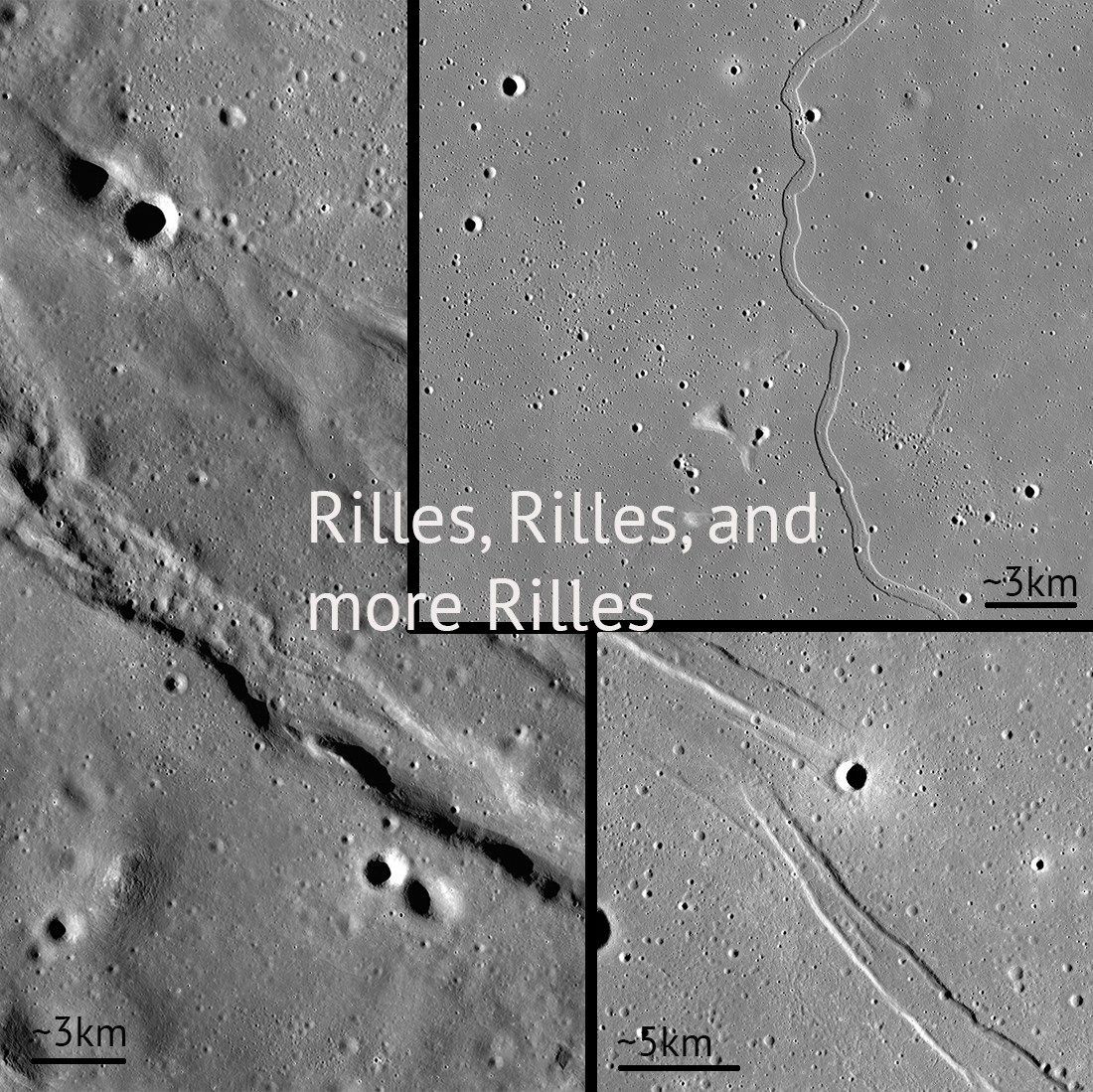
There are more than just craters on the Moon. In fact, our Moon hosts many strange geological formations, but perhaps none are more eye-catching than lunar rilles. These formations, which often look almost like dried riverbeds, have a variety of potential origins, and Controlled Feature Mosaics made from LROC Narrow Angle Camera (NAC) images allow for a closer look. Lunar scientists have categorized these structures into 3 distinct categories: sinuous, straight, and arcuate rilles.
First, let's talk about sinuous rilles, the most common type found on the Moon. Vallis Schröteri, below, is a beautiful example.
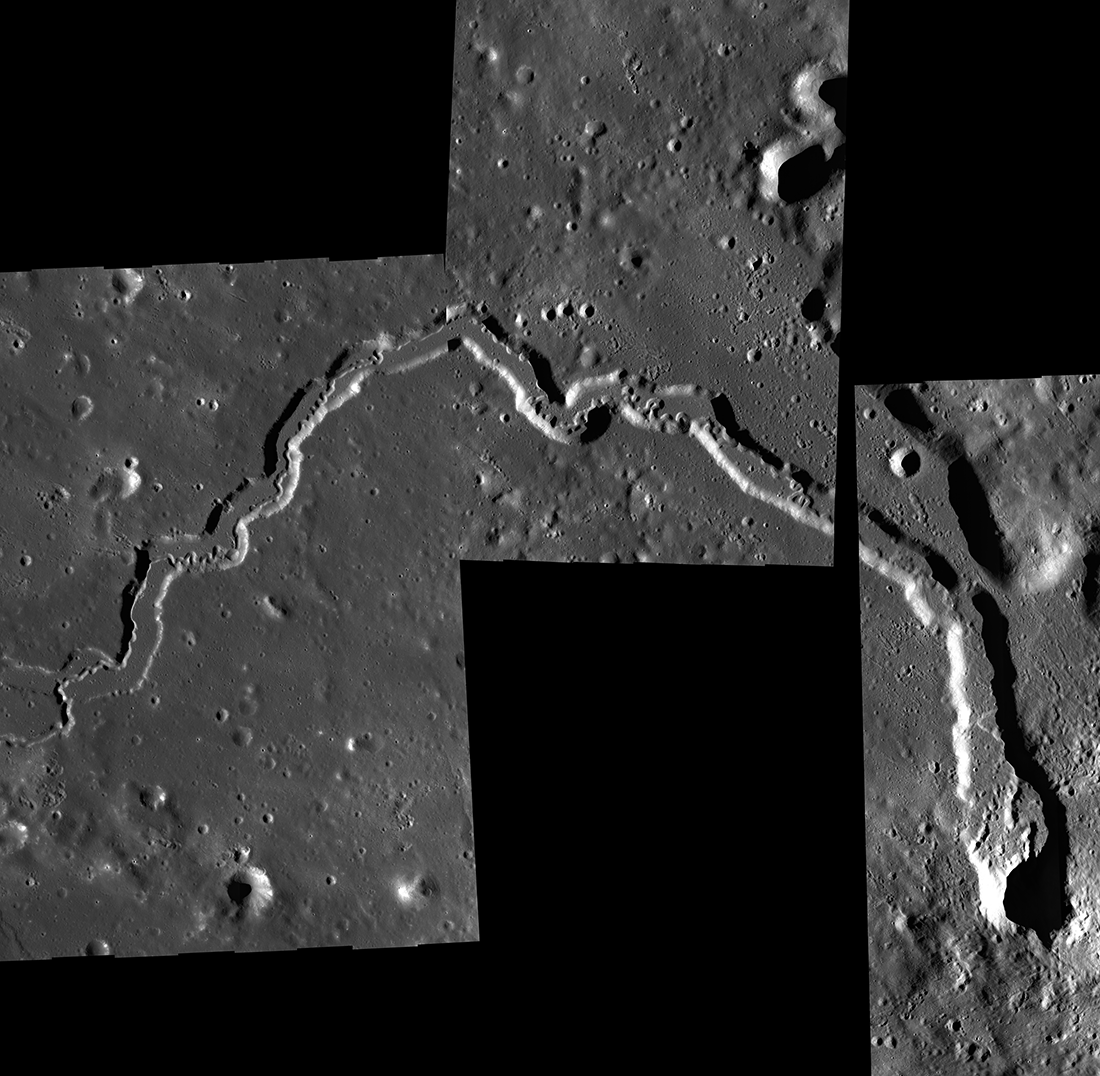
These channels have the appearance of a meandering river that twists and turns as it flows along. Sinuous rilles arethought to have formed as the result of surface lava flows, or collapsed lava tubes. Many have crater-like structures at their point of origin. These depressions are most likely vents where the magma reached the surface from mantle source regions below. While sinuous rilles are a common lunar landform, there are similar, though typically much shorter, volcanic features on Earth that form when magma steadily emerges from a vent and forms a channelized flow.
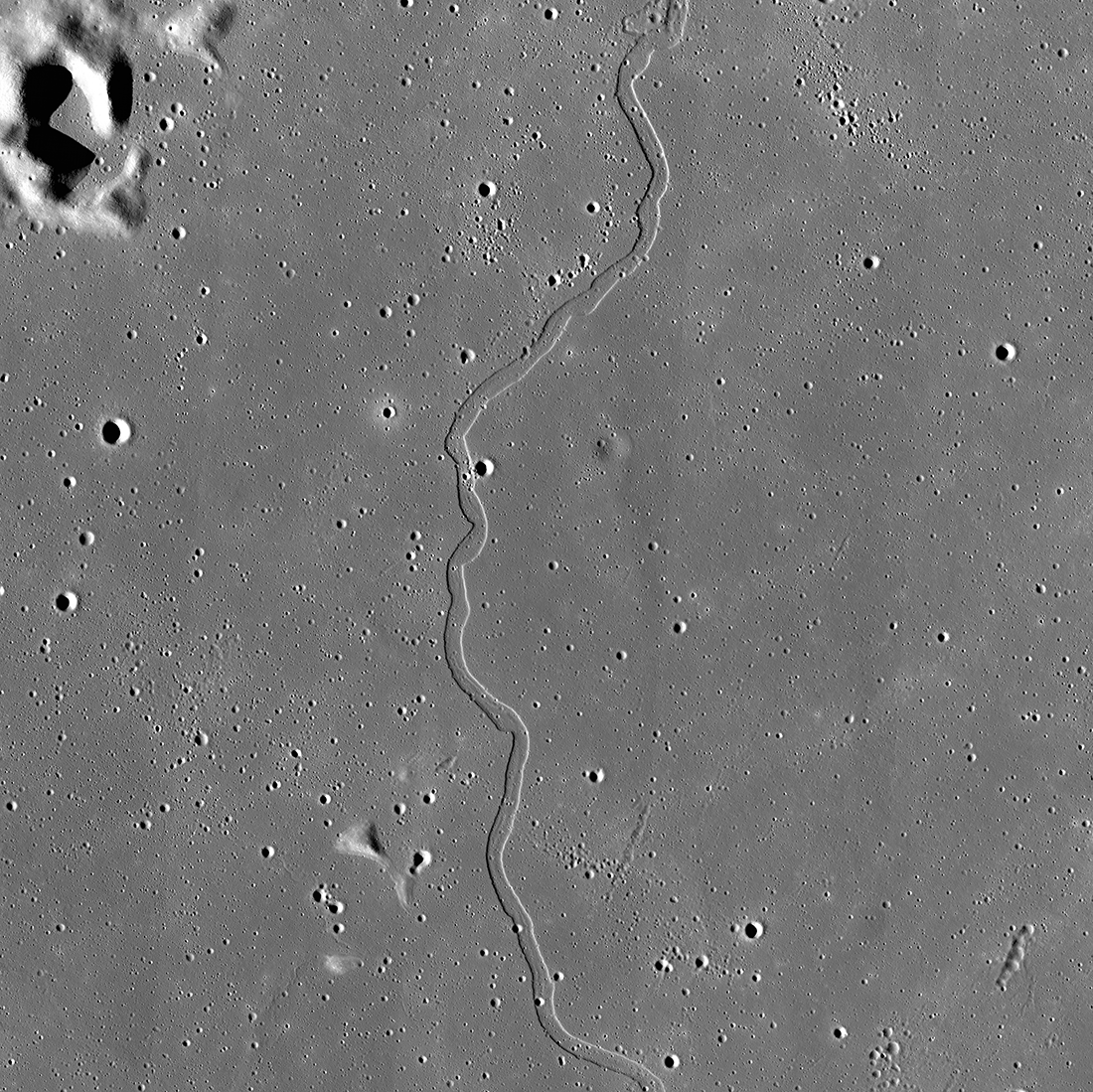
Next, we can explore straight rilles, which are thought to have formed due to tectonic forces. These valleys are graben, which form when the surface pulls apart under extensional stresses, and a block of the crust drops down to create the valley floor. The largest rille on the Moon is a straight rille known as Rima Sirsalis. It extends about 400 km across the lunar near side in Oceanus Procellarum, the Ocean of Storms. On a good night (when the moon is waning and the topography results in large shadows being cast), you may be able to find it with a telescope at home!
Rima Cauchy, below, is another beautiful example of a straight rille.
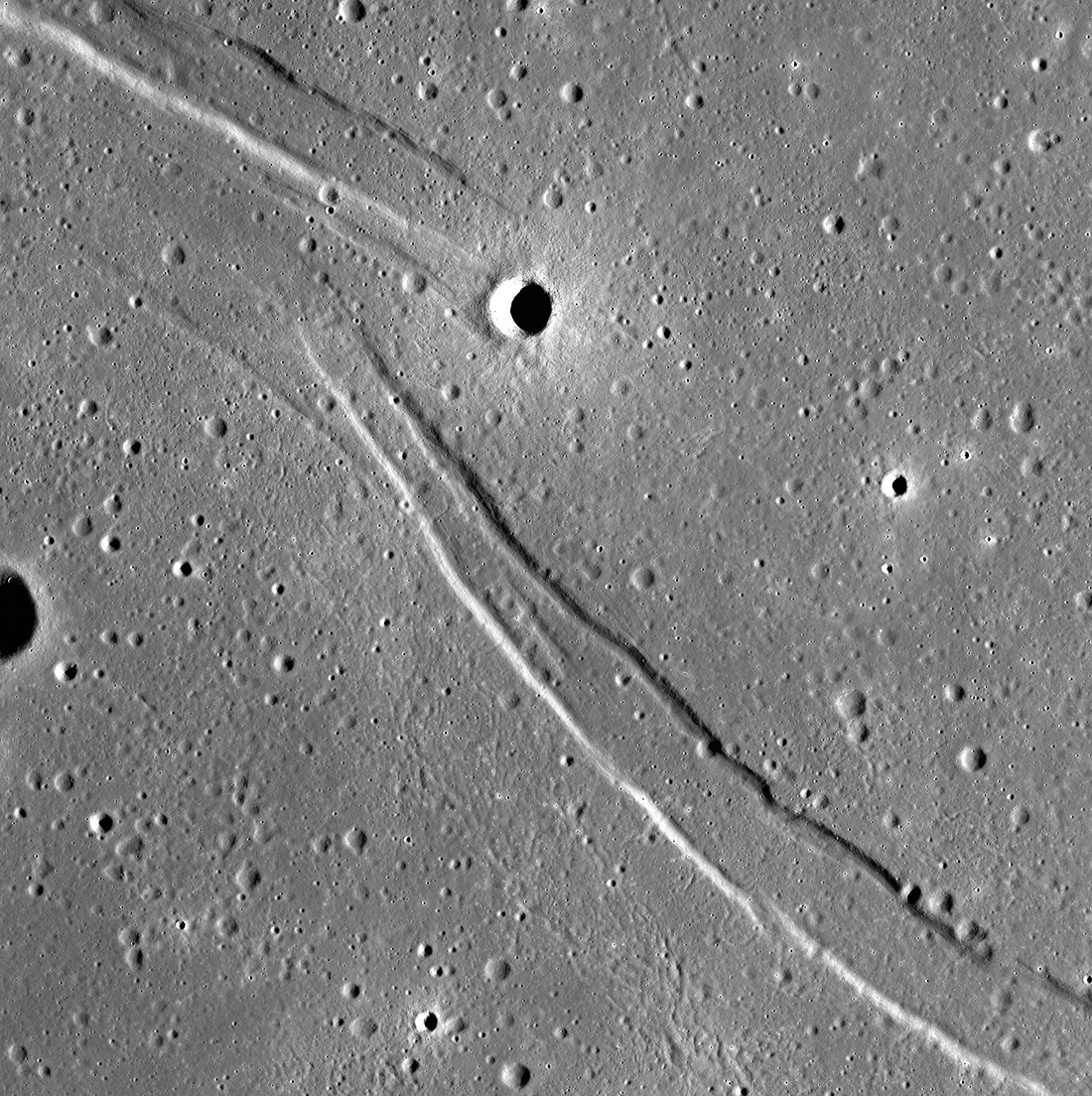
The last type of rille is known as the arcuate rille. Typically curved formations, like a parentheses or a bow (without the arrow), these depressions are formed along the edges of maria within some basins. Arcuate rilles likely formed as the mare basalts sagged under their own weight toward the center of the basin, causing the edges to pull apart; the rille shape follows the circular shape of the basin.
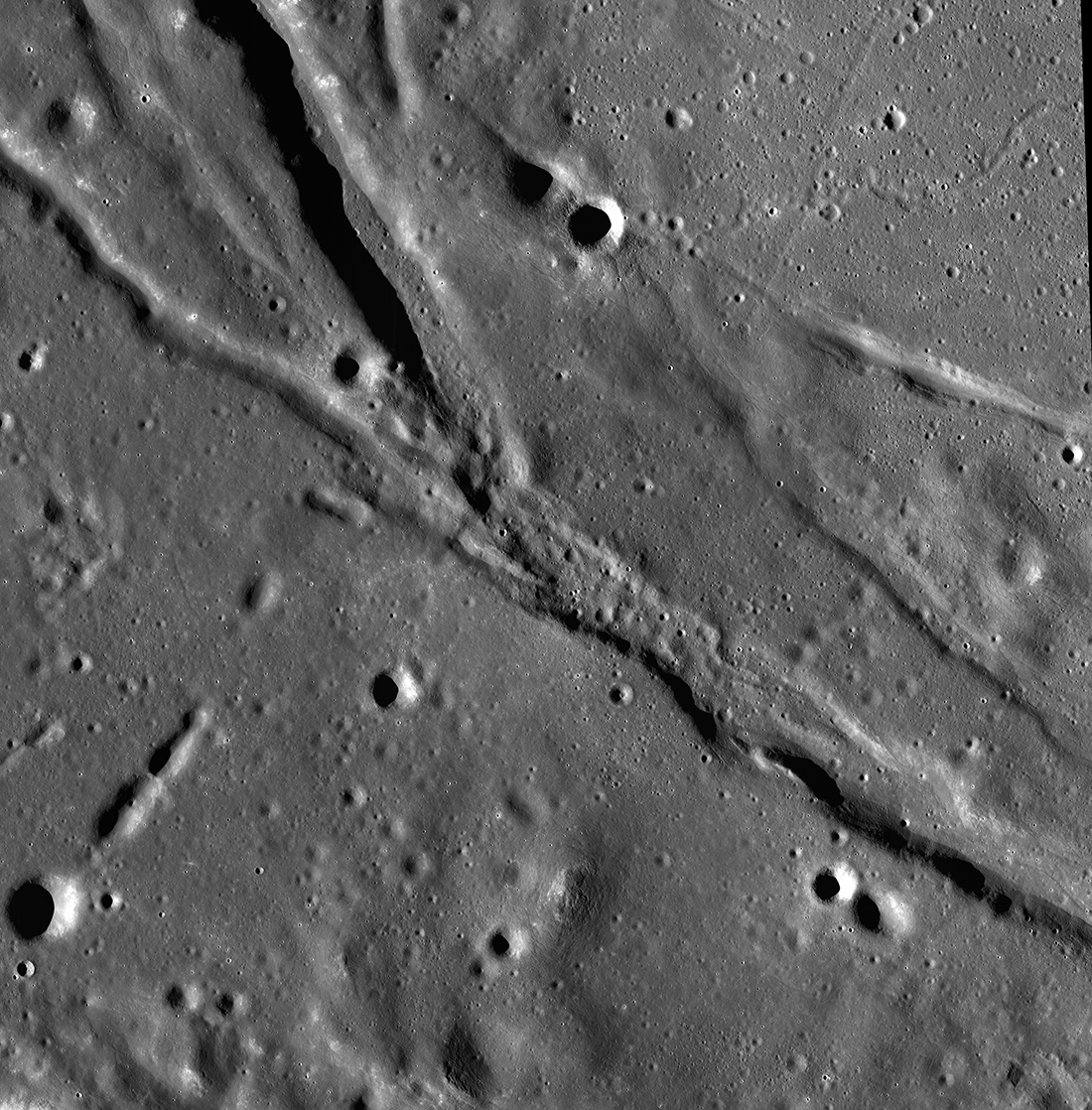
Do you want to learn more about rilles? Check out these related featured image posts!
Rima Ariadaeus - A Linear Rille
Rilles as far as the eye can see in Prinz!
Download these amazing controlled feature mosaics for yourself. Just click below!
Want to learn more about creating controlled feature mosaics? Check out Feature Mosaics: Behind the Seams.
Published by Alyssa Bailey on 30 April 2020